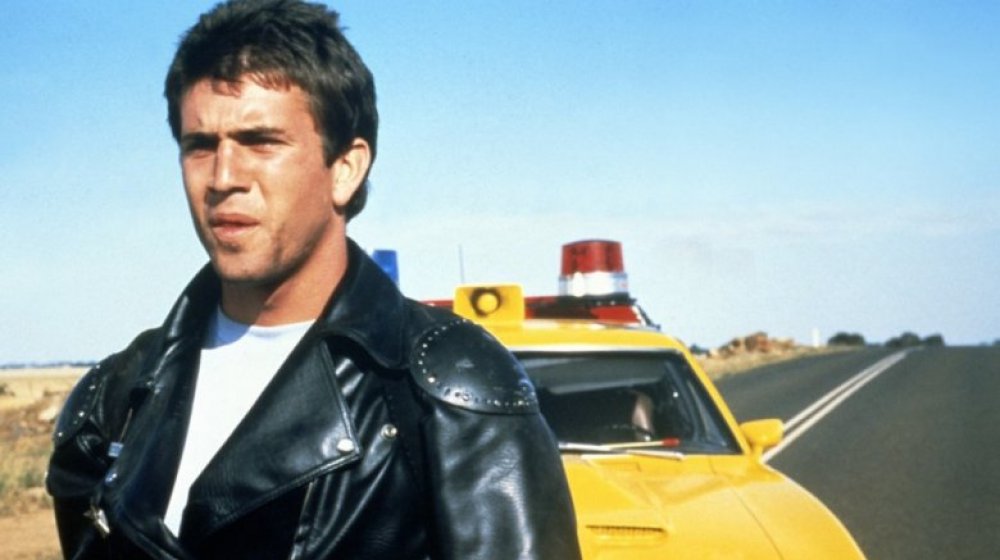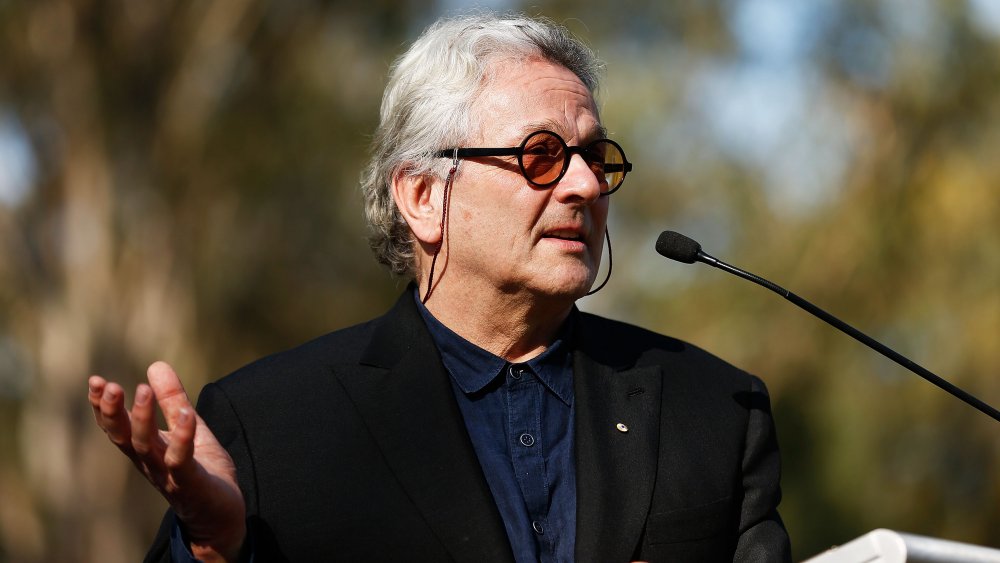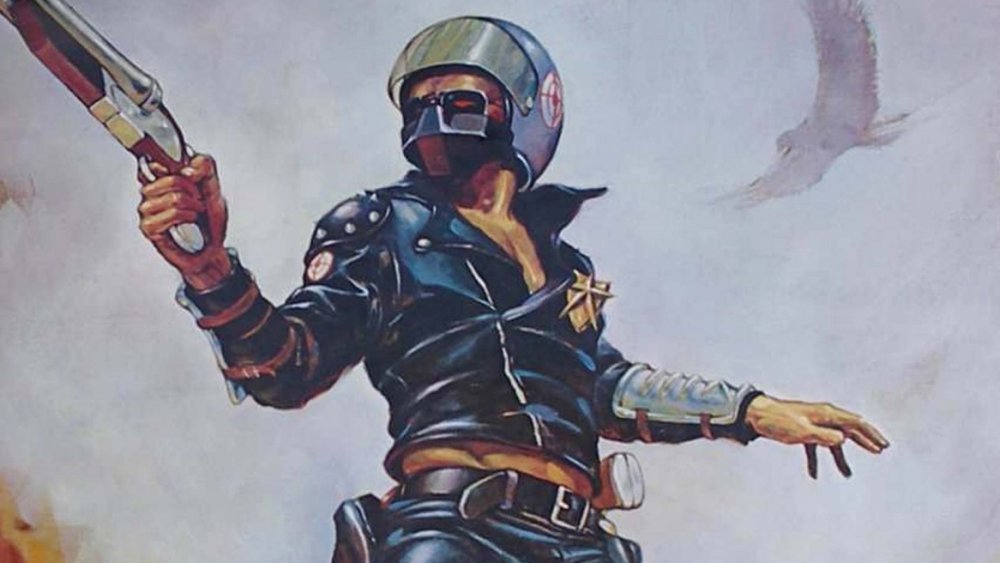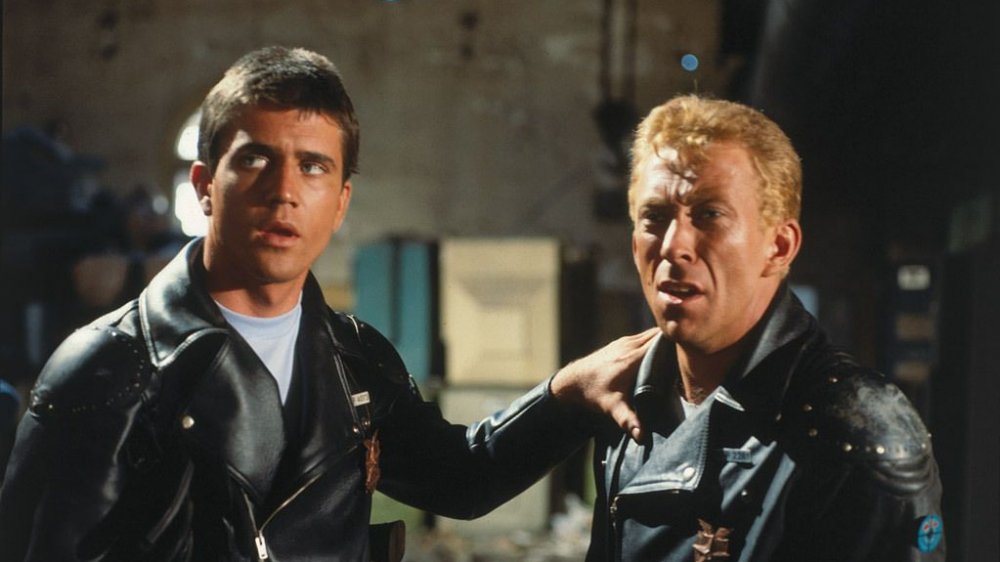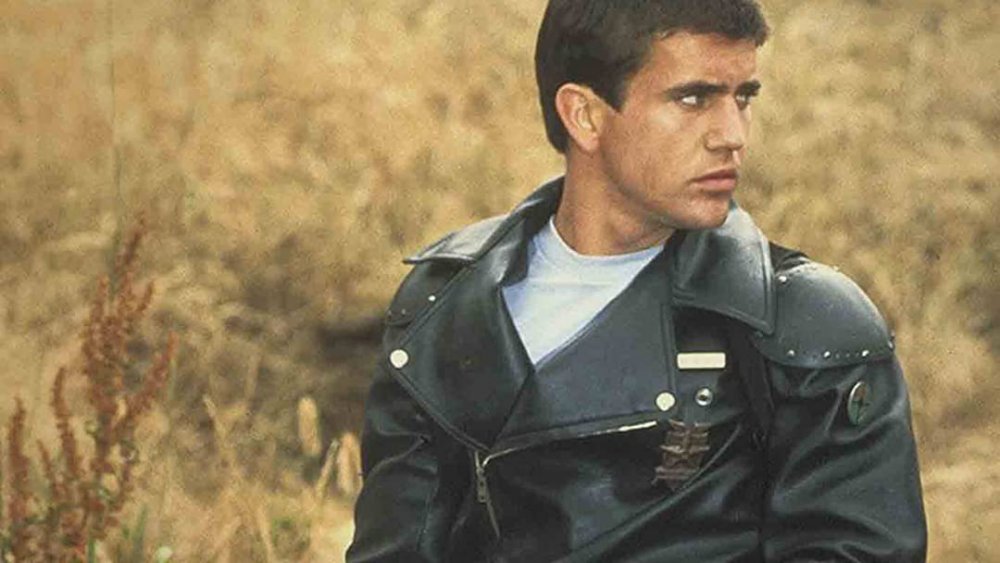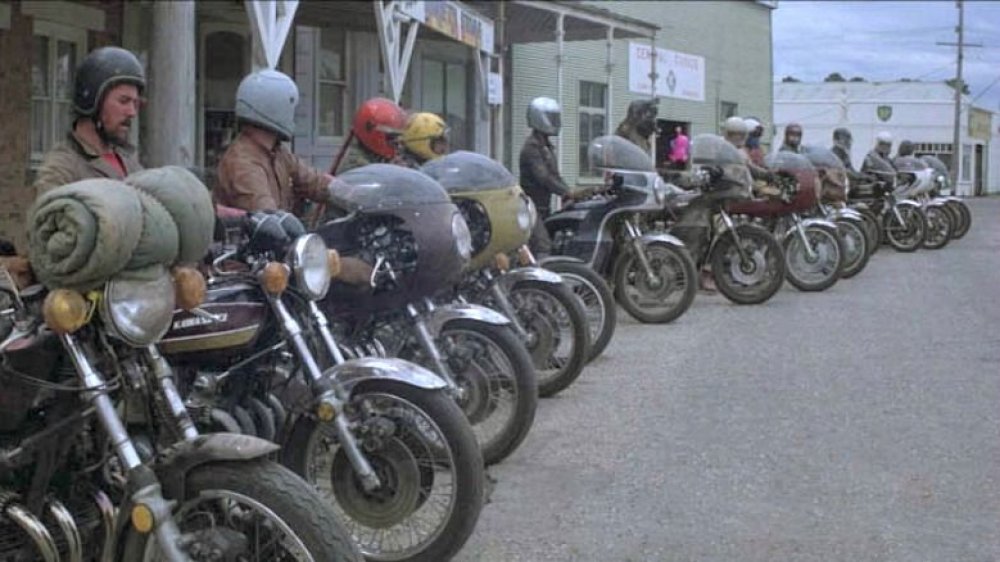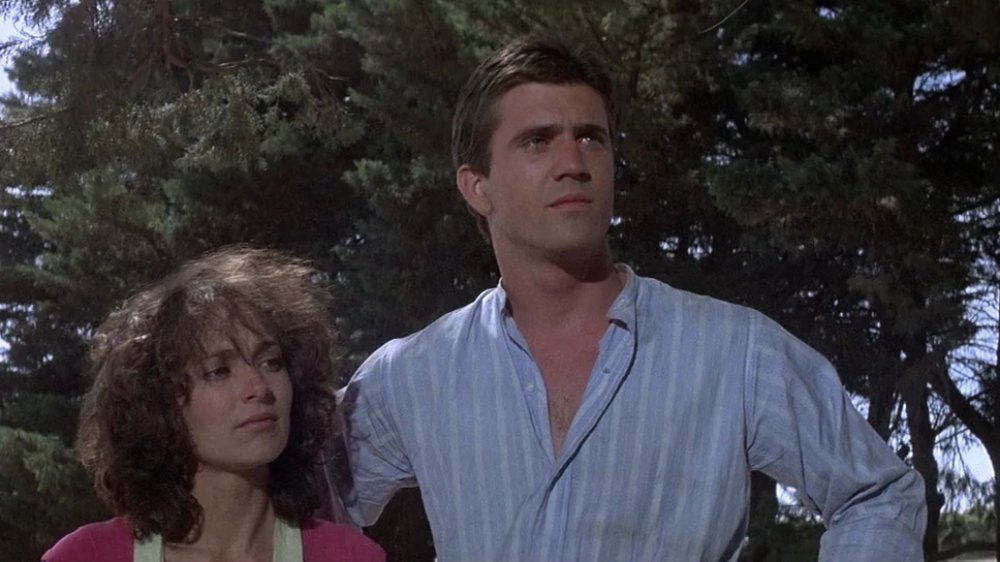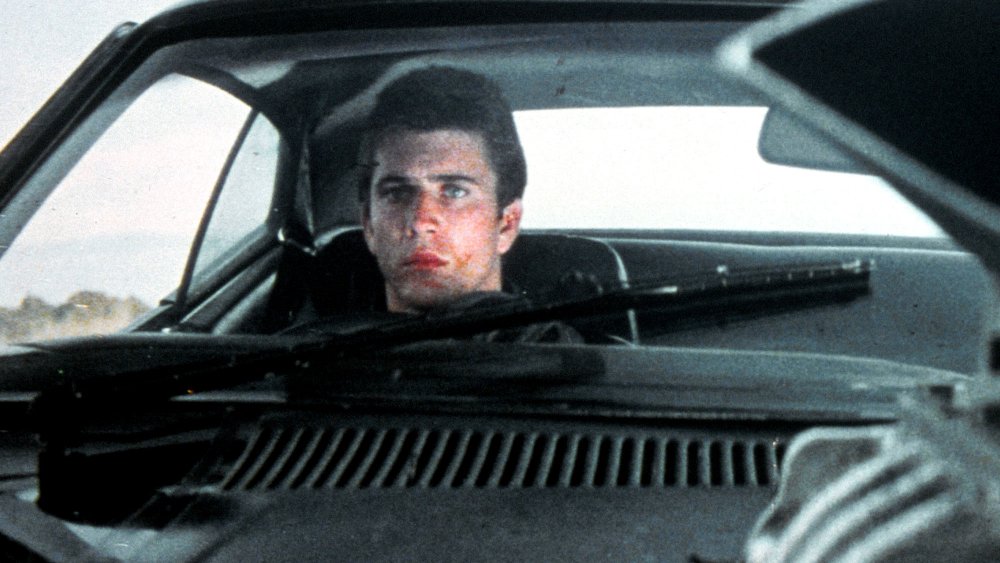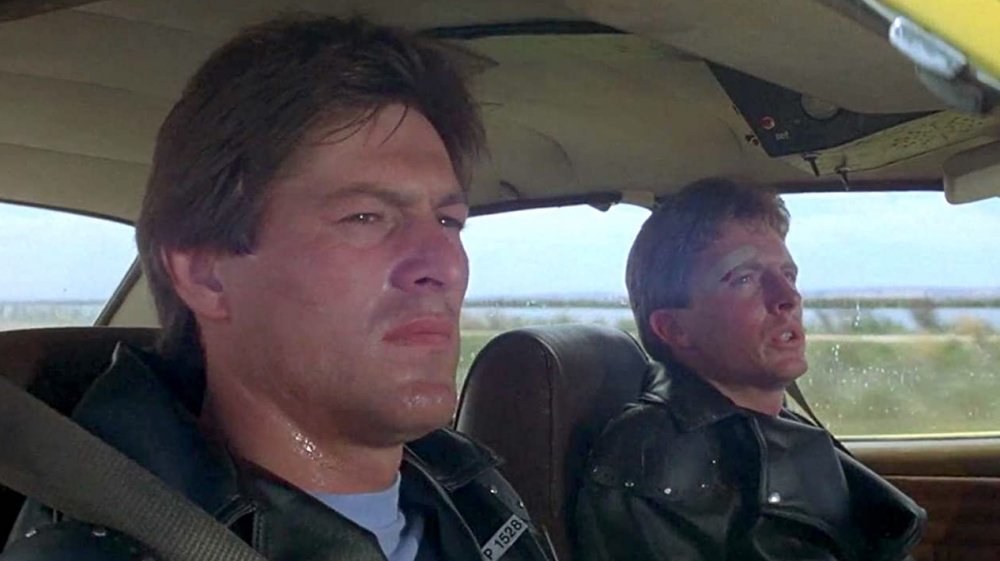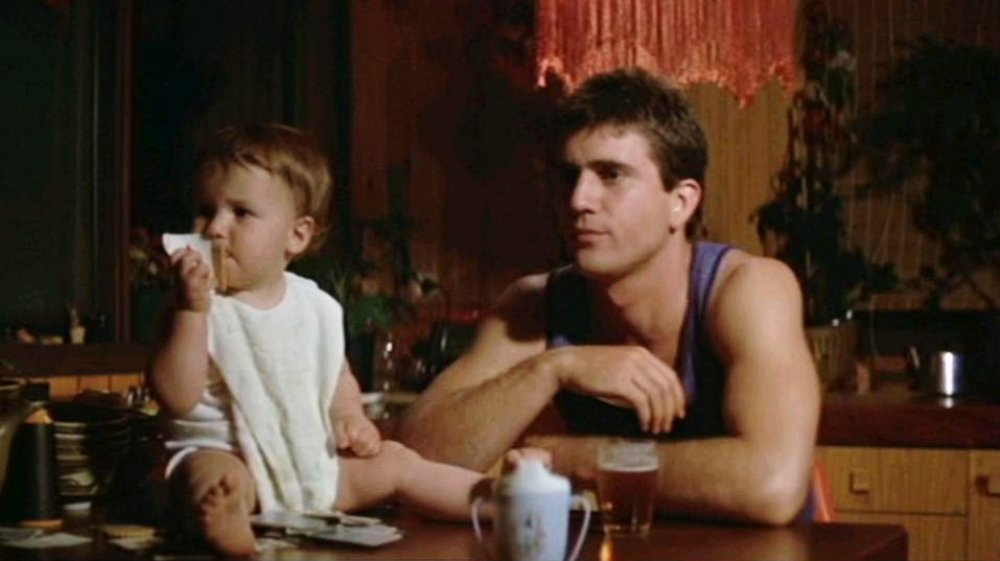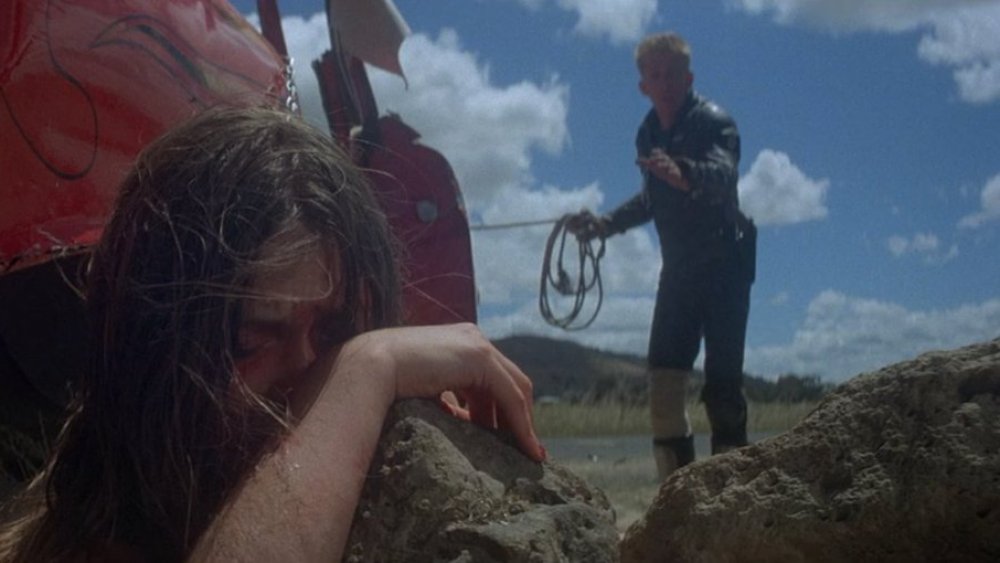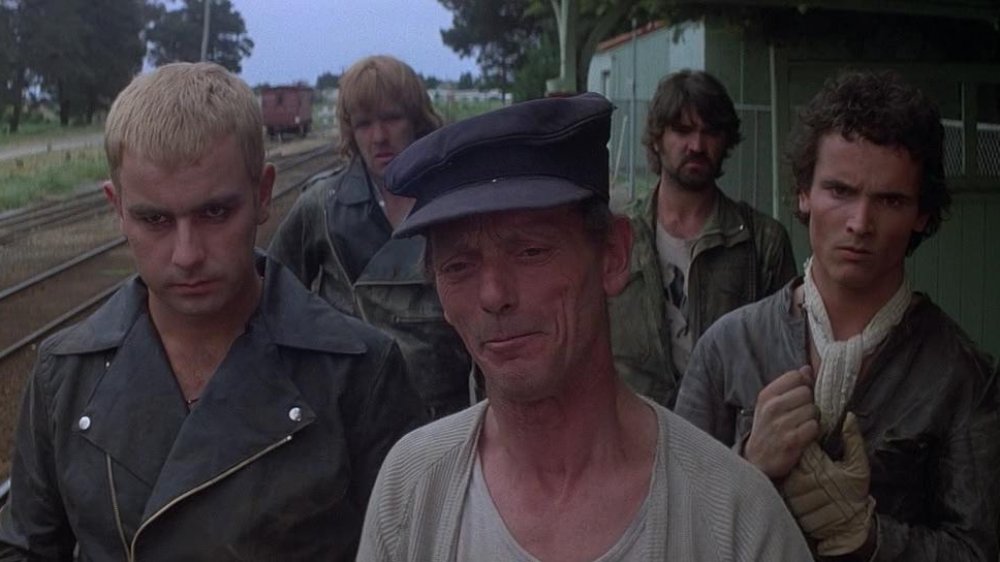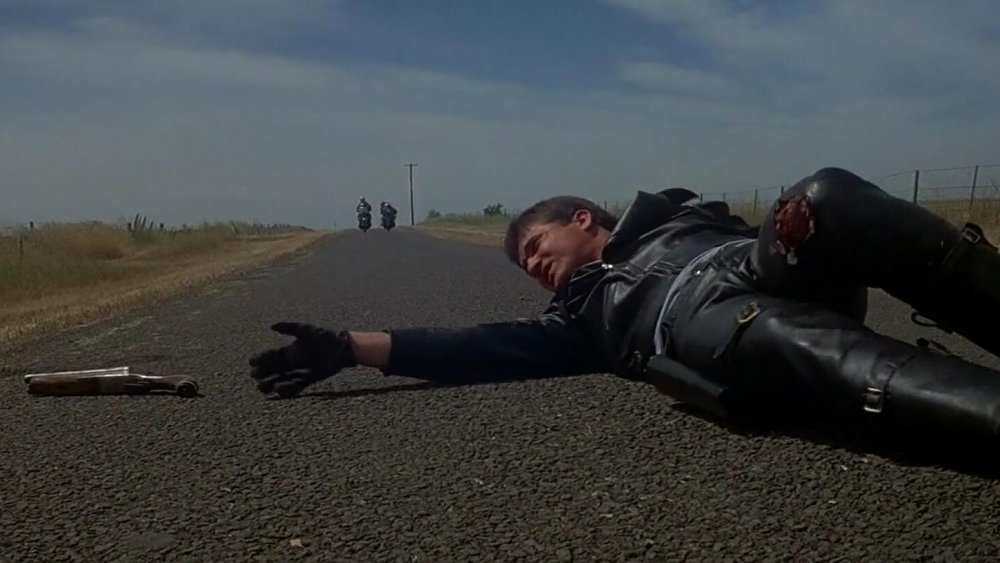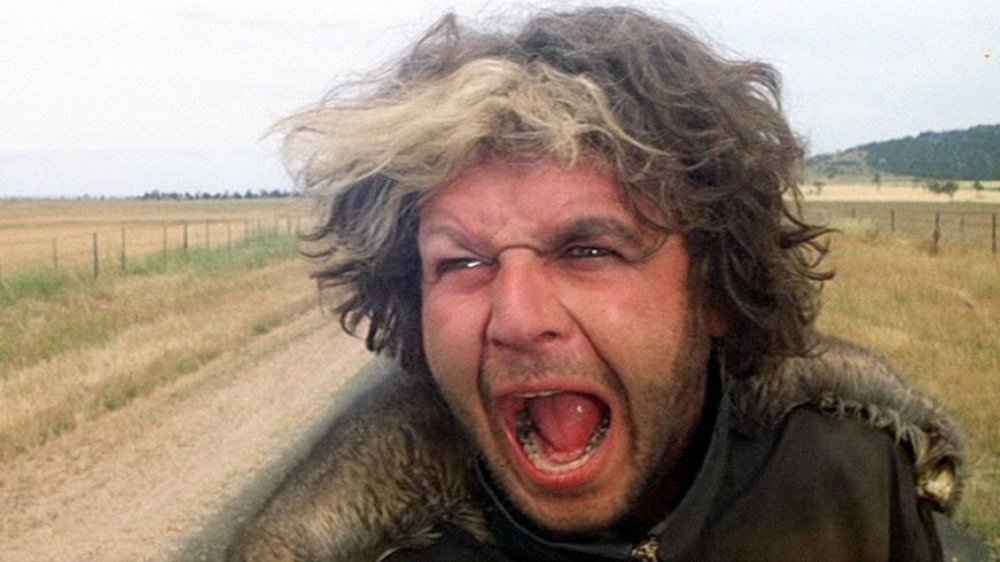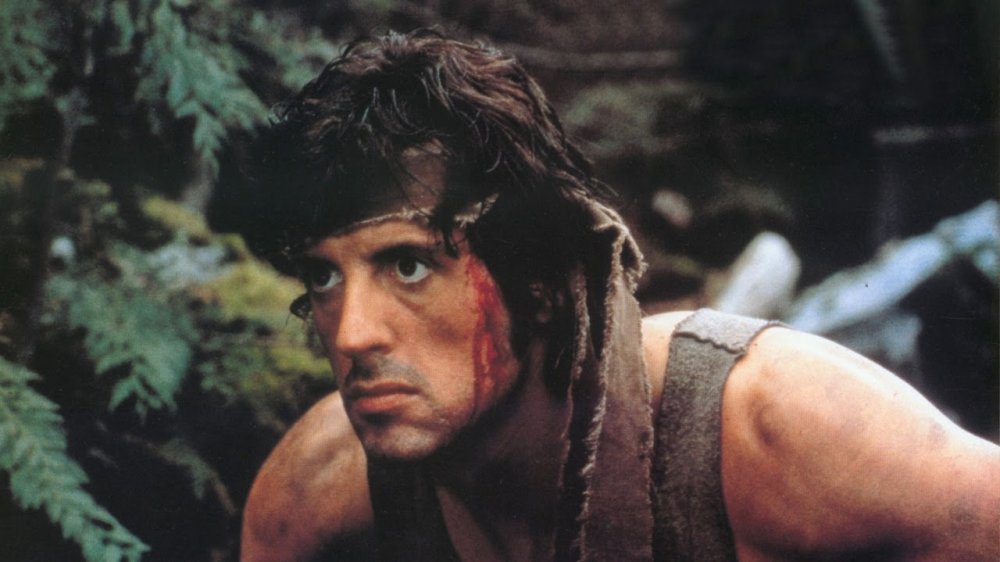What You Don't Know About 1979's Mad Max
Before he drove gloriously on the Fury Road, before he faced Aunty Entity and went Beyond Thunderdome, and even before they called him the Road Warrior, he was simply a man named Max... who went Mad. In 1979, director George Miller and producer Byron Kennedy brought a new hero into the world of cinema with Mad Max. A revenge drama based around an Australian cop in a not-too-distant future, Miller's debut feature showcased his early skills at showcasing high-octane action sequences, narratively precise storytelling, and visually stunning imagery. Mad Max was here, and there was no going back.
But what really happened behind the scenes during the making of this gonzo action spectacle? How did George Miller and his ragtag team of Aussie filmmakers come up with the idea for this close-to-dystopian action bonanza? How did they find Mel Gibson to star as the titular crazy cop? And how dangerous was it to actually film these death-defying stunts? It's time to start your engines and blare those sirens, because we're taking a look at what you don't know about 1979's Mad Max.
George Miller's medical past
On most movie sets that are dangerous, you're likely going to want to have a doctor or medical team handy for any mishaps that might take place during production. But Mad Max had something up its sleeve to one-up all other film sets: a director with his own history of medical experience. That's right — before becoming a filmmaker, George Miller spent his early years working in the emergency room at St. Vincent's Hospital in Sydney, Australia.
During his time working in this profession, Miller witnessed many victims of automobile and other vehicular accidents firsthand, providing a form of twisted inspiration for the kinds of incidents that would take place in the Mad Max films. It was this early empathetic view into the world of medicine and human care that likely shaped the rest of Miller's career, and informed him of the barbaric damage that can be done to the human body all for the sake of a few cheap thrills.
Miller and Kennedy prep for a feature
George Miller was the man in the director's chair, but any and all success that the Mad Max series has enjoyed must be shared with his co-producer Byron Kennedy. The late, great co-producer of Mad Max and Mad Max 2, Kennedy served as the second set of brains behind bringing this action-packed masterpiece to the big screen.
After meeting at a film workshop at Melbourne University, Miller and Kennedy first collaborated on the short film Violence in the Cinema, Part 1 — which, per the title, offers a loving tribute, parody, and dissection of the world of movie violence. The short garnered acclaim across the country, and gave Kennedy and Miller the confidence to not only start their own production company (which they aptly named Kennedy Miller), but to embark on their first feature production. Although Kennedy tragically passed away in a helicopter crash in 1983, George Miller has kept on producing under the Kennedy Miller production banner. Kennedy's legacy also lives on in the form of the Byron Kennedy Award, which has been handed out annually since 1984 to honor "outstanding creative enterprise within the film and television industries... whose work embodies the qualities of Byron Kennedy: innovation, vision and the relentless pursuit of excellence."
The story for Mad Max was inspired by a real-world crisis
While the later Mad Max films would delve into the fantasies of a post-apocalyptic society run amok, this wasn't exactly where the ideas started out for the germination of this story. When George MIller and former journalist James McCausland set out to create this world of roving bikers and cops out for revenge, there was actually some helpful real-world inspiration to get their wheels turning.
Arguably their greatest influence was the 1973 global oil crisis, when shutoffs to international oil exports led to vast oil shortages all over Australia. Miller and McCausland noted long lines of Australian motorists lining up for gas, and started to extrapolate what might happen if this desire for fossil fuel was taken to a disturbingly dangerous degree. That impetus for greed, power, and control steered the way for the story of Mad Max to truly take shape.
How Mel Gibson became Mad Max
He'd go on to become one of the most famous — and then infamous — film stars in the world, but before all the blockbusters that made him instantly recognizable to moviegoers, Mel Gibson earned his action hero stripes in Mad Max. After his debut in the initial Mad Max film (which was only his second credited feature film role), he would cement his glory in the next two Mad Max features while landing starring roles in a wide variety of films that included action hits like the Lethal Weapon franchise as well as comedies like What Women Want.
When looking for actors for Mad Max, Miller and his team called in a group of recent graduates from the National Institute of Dramatic Art to try out for the menacing young men who populate the film. Luckily, Gibson was among these recent grads, and legend has it, he would go out and get beat up in fights the nights before auditions so that he could come in looking tough. Legend or reality, Gibson got himself the role of a lifetime, and got the ball rolling on this adventure once and for all.
A biker gang that played itsellf
Building up to the maniacal warboys of Fury Road, the original Mad Max is still plenty chaotic with Toecutter and his rampaging biker gang that spread fear and violence wherever they go. They're an integral part of building Miller's world of future-ish Australia, where the rules of society are beginning to crumble and characters like the Nightrider and Johnny the Boy are able to go as wild as they do.
There's a good reason these men are as menacing as they appear in Mad Max: they were members of an actual biker gang. The majority of extras used in the film were members of outlaw motorcycle clubs in Australia, providing an even greater sense of authenticity to the shoot. Miller even asked them to use their own bikes and ride them all the way from Sydney to Melbourne, as their budget couldn't allow for aerial transport. Not a very glamorous beginning, but the trip was worth it to bring that extra bit of grit and reality to the fantastical madness of Miller's vision.
One of the original leading actor's got injured right before filming
With Mel Gibson set to star as Max, it wasn't long before the rest of the stellar cast was thrown together. The ensemble Miller assembled around his star consisted of a heap of Australia and New Zealand native performers, including Hugh Keays-Byrne as the villanois Toecutter, Steve Bisley as Max's partner Goose, Jonathan Hardy as Police Commissioner Labatouche, and, initially, Rosie Bailey as Max's wife, Jessie Rockatansky.
Fate had something else in mind, it seems, as four days into shooting, Bailey was involved in a motorcycle accident that left her unable to complete the film. Setting production back multiple weeks, Bailey's role was eventually recast with Joanne Samuel, bringing a courageous edge (not to mention a mean saxophone) to what could've been a throwaway role. Just goes to show that not even a replacement in casting could put a stop to Miller and his team and their mission to bring this story to the screen.
A production shoot that was 'guerilla filmmaking' madness
Would you be surprised to hear that the filming of Mad Max was just as chaotic, dangerous, and, well, maddening as the action of the film itself? Being a low-budget, below-the-radar, ultra-violent mess of a production, much of the filmmaking reflected that rag-tag style of putting things together, all of it unfolding over the span of a crammed-together six-week shoot.
From closing roads without proper permits, not being able to use proper walkie-talkies so as not to get tangled with police radio interference, and police outfits having to be made out of vinyl rather than real leather, to the general chaos that comes from having to film a series of real-life car crashes and having to wreck piles upon piles of cars, the filming of Mad Max would likely make a worthy entry into the Mad Max saga all on its own.
An editing process done in cramped quarters
What do you picture when you think about the post-production and editing process for a film? Maybe it's a bunch of filmmakers sitting behind a desk, looking at a series of computer monitors while cutting and pasting footage together. If only Miller and his crew were so lucky. For much of their editing process, the work had to take place in cramped living rooms and smaller-than-ideal accommodations.
Working out of a friend's apartment on a homemade editing rig, Miller would cut the film itself in the living room while the sound editing crew cut sound in the kitchen — a process that amounted to a further unspooling of madness in the pursuit of getting this film completed. Though the crew was stuck in close company with each other, it all ended up being worth it to put together the film that would soon launch Miller's stellar career — along with a franchise that continues to thrill fans decades later.
The film was banned in New Zealand and Sweden
Even as it became a huge box office success in its own home country of Australia (with something of a less-than-stellar release in the States), not everyone was thrilled to welcome the ultra-violent antics of Mad Max into their cinemas. In one of Australia's closest neighboring nations, New Zealand, the film was initially banned upon its release due to overwhelming similarities between events depicted in the movie and a real-life incident in which someone was burned alive in their car. The film would eventually be released there in 1983, after the success of Mad Max 2.
Its reputation in Sweden, however, lasted for quite a while longer. There was no specific scene that caused the ban there, rather just an all-around distaste for the excessive violence of the film that kept Swedish audiences from enjoying the feature for decades. It wasn't until 2005 that the nation decided to finally lift the ban and let Max roam free in Sweden along with the rest of the world.
Critics didn't go mad for Max Max
Even with its bold vision, brilliant stunts, and heart-stopping action, the general response to Mad Max upon release in Australia was anything but rapturous. For The Bulletin, Australian commentator Phillip Adams described the film as having "all the emotional uplift of Mein Kampf," and added that it would be "a special favorite of rapists, sadists, child murderers and incipient Charles Mansons." Hardly the kind of reviews you'd like to get for your debut feature, but surely the American critics wouldn't be as harsh as their Australian counterparts?
Actually, they were even harsher. Upon its American release, Tom Buckley of the New York Times deemed the film "ugly and incoherent," and in his non-fiction collection Danse Macabre, Stephen King (yes, that Stephen King) outright called the film "a turkey." They say all press is good press, but it's hard to imagine George Miller being happy with the initial critical reaction to Mad Max.
The film was redubbed for its U.S. release
Many films add an English-language dub for U.S. screenings if they're made in a foreign language, but Mad Max might be one of the only films that was made in English and still ended up getting redubbed for its American release.
Upon its initial U.S. release in 1980, the entire film's dialogue track was redubbed to give the film's characters "American accents." This included instances of removing Australian slang, and general attempts to make the film sound more "comprehensible" to American audiences, even if the voices sounded inauthentic out of these actors' mouths. After the film caught on and spawned the blockbuster franchise we know and love today, the original dub was eventually brought to the U.S., providing audiences with a proper glimpse as to how the film was supposed to sound, with every "Oi!" and "See looks!" intact.
Mel Gibson won the 'Australian Oscar' in 1979... but not for Mad Max
While Fury Road was the first entry in the Mad Max saga to achieve any sort of Academy Award recognition (including six wins, and additional nominations for Best Director and Best Picture), the original Mad Max still had its fair share of awards recognition at Australia's very own film awards ceremony, then known as the AFI but today known as the AACTA (Australian Academy of Cinema and Television Arts) Awards, where it received seven nominations (including for Best Film and Best Direction) and racked up three wins for Editing, Original Music Score, and Sound.
The same year, leading man Mel Gibson did indeed win a Best Actor award at the ceremony... for an entirely different film. Gibson wasn't even nominated for his turn in Mad Max, instead being recognized and rewarded for his other lead film role that year, in the romantic drama Tim, playing the dramatic role of a developmentally challenged builder's worker. Though global fame eluded him for this particular role, there's no question which of Gibson's roles in 1979 would forever live in the worldwide audience's imagination.
Toecutter would go on to play Immortan Joe in Fury Road
More than three decades after his directing debut, George Miller returned to the world of Mad Max with a film that is widely recognized as one of the best action movies of all time. Mad Max: Fury Road took Miller's wide-eyed aspirations as a young filmmaker and transformed them into an apocalyptic descent into action Valhalla.
While there's a huge difference between Fury Road and the original Mad Max in terms of production value, one element they do share is a key actor in both films: Hugh Keays-Byrne, perhaps better known today for his performance as the devilishly disgusting Immortan Joe in Fury Road. His delightfully villainous performance there had its origins back in the original Mad Max, in which he starred as the lead villain, Toecutter. While certainly quite a bit older, and with a starkly different look (you won't be catching Toecutter in a mask anytime soon), Keays-Byrne's commitment to embodying the scum of villainy and chaos in the Mad Max universe has solidified this action saga as one of the finest pieces of filmmaking of the last half century.
George Miller's winding road to Mad Max 2
With the release of Mad Max, and the mixed but altogether lively reception and commotion around it, offers from Hollywood started to roll in for George Miller fairly quickly. According to unconfirmed legend, one of the potential projects that might have been most intriguing to Miller was the offer to direct the next big Sylvester Stallone movie, First Blood, another film that — although few could have suspected it at the time — would also go on to jumpstart a highly successful and long-running action franchise.
Whether or not that story's actually true, we do know that after Mad Max was released, Miller spent quite a bit of time trying to write and develop his next project, Roxanne, a movie that, much to his chagrin, ended up languishing in development hell for years before he finally gave up on getting it made. After much deliberation, Miller realized that with his first flush of success, he could return to the world of Mad Max with a bigger budget, a bigger vision, and a bigger sense of destruction to bring to the silver screen. Thus he threw himself back into the dystopia of his own making and brought Mad Max 2 (or The Road Warrior) out into the world — and the rest is futuristic, hard-hitting cinematic history.
